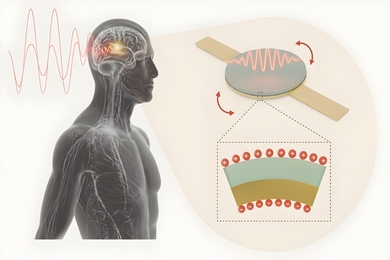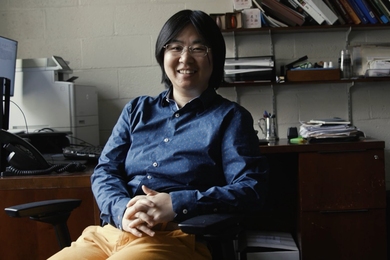Neuroscientists at MIT’s Picower Institute for Learning and Memory report in the March 18 Proceedings of the National Academy of Sciences (PNAS) that they have reversed autism symptoms in adult mice with a single dose of an experimental drug.
The work from the laboratory of Nobel laureate Susumu Tonegawa, the Picower Professor in the Department of Biology and a principal investigator at the Picower Institute, points to potential targets for drugs that may one day improve autism symptoms such as hyperactivity, repetitive behaviors and seizures in humans by modifying molecular mechanisms underlying the disease.
“These findings suggest a possible novel therapeutic target for the treatment of Fragile X Syndrome (FXS) — the most common inherited form of autism and intellectual disability,” said Eric Klann, a professor of neural science at New York University.
Using genetically modified mice that exhibit FXS symptoms, the researchers targeted neurons’ dendritic spines, small protrusions that receive signals from other neurons and are key to effective neuron-to-neuron communication within the brain. The researchers focused on spines in the temporal cortex, a part of the brain implicated in autism in humans.
Humans with FXS and autism, and the mouse model with FXS symptoms, have abnormally high densities of dendritic spines, leading to deficits in learning, cognition and behavior.
Tonegawa is scientific co-founder of Afraxis, a California-based company developing drugs that target p21-activated kinase or PAK, a key regulator of dendritic spines. Calling the inhibitor drug FRAX486, Tonegawa and colleagues demonstrated that inhibiting PAK with a single dose of FRAX496 reduced cellular and behavioral abnormalities in mice that model FXS.
This work was supported by the National Institutes of Health, the RIKEN Brain Science Institute and the Simons Center for the Social Brain at MIT.
The work from the laboratory of Nobel laureate Susumu Tonegawa, the Picower Professor in the Department of Biology and a principal investigator at the Picower Institute, points to potential targets for drugs that may one day improve autism symptoms such as hyperactivity, repetitive behaviors and seizures in humans by modifying molecular mechanisms underlying the disease.
“These findings suggest a possible novel therapeutic target for the treatment of Fragile X Syndrome (FXS) — the most common inherited form of autism and intellectual disability,” said Eric Klann, a professor of neural science at New York University.
Using genetically modified mice that exhibit FXS symptoms, the researchers targeted neurons’ dendritic spines, small protrusions that receive signals from other neurons and are key to effective neuron-to-neuron communication within the brain. The researchers focused on spines in the temporal cortex, a part of the brain implicated in autism in humans.
Humans with FXS and autism, and the mouse model with FXS symptoms, have abnormally high densities of dendritic spines, leading to deficits in learning, cognition and behavior.
Tonegawa is scientific co-founder of Afraxis, a California-based company developing drugs that target p21-activated kinase or PAK, a key regulator of dendritic spines. Calling the inhibitor drug FRAX486, Tonegawa and colleagues demonstrated that inhibiting PAK with a single dose of FRAX496 reduced cellular and behavioral abnormalities in mice that model FXS.
This work was supported by the National Institutes of Health, the RIKEN Brain Science Institute and the Simons Center for the Social Brain at MIT.





